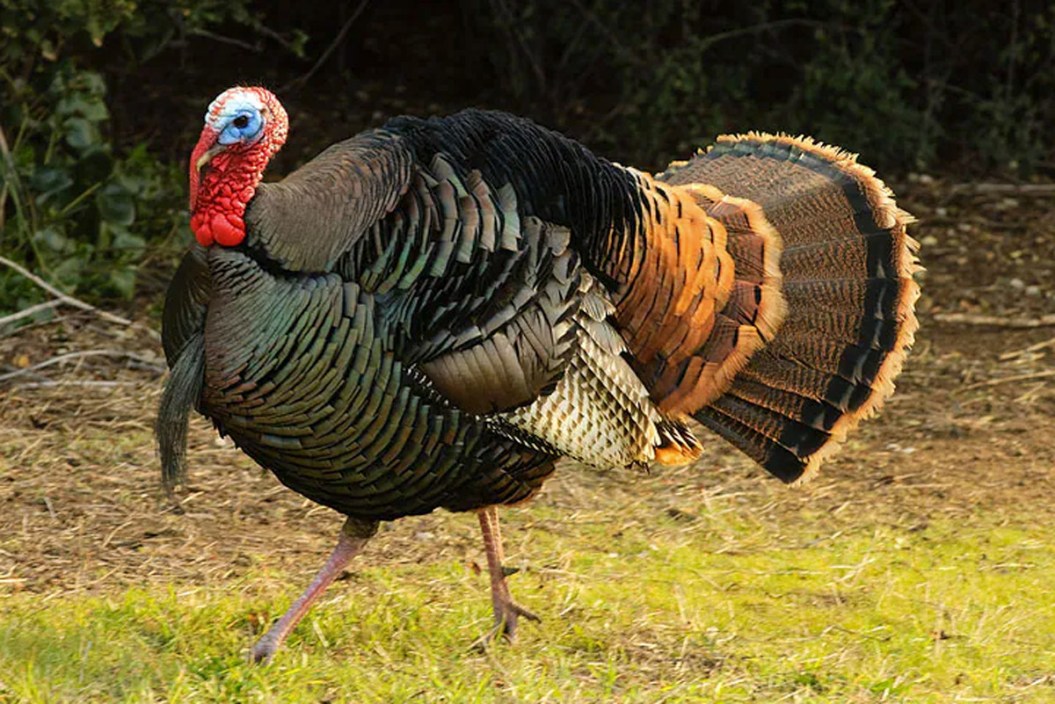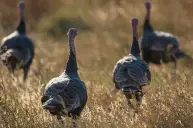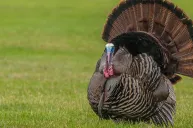As someone who makes calls, I've spent a lot of time talking about how to call turkeys.
I've heard a lot of hunting stories about what works and what doesn't, and seen a lot of different types of calls. But at the end of the day, what really makes or breaks a turkey calling approach is discipline.
If you don't know how to effectively call in a turkey, your best bet at harvesting one would be to abandon the call all together. If you aren't well-versed in the art, you'll probably just end up doing more damage than anything, as subpar sounds or a misunderstanding of how much to actually call can completely blow your cover.
The key is to only bring your turkey calls into the woods with a substantial amount of preparation, meaning you shouldn't go light on research or practice.
Before you get started, though, the first thing you have to decide is what kind of call you want to use, as turkey hunting presents a plethora of options. Perhaps the easiest calls for beginners to learn on are push-button calls and box calls, which are very simple to operate, but limit you to fewer sounds.
If you want a little more versatility, you can move up to a pot call (also known as a slate call). These aren't that much harder to use and allow you to make just about any sound you want, which attracts both beginners and experts.
Only once you've mastered both sounds and cadence will you want to advance to a diaphragm call, as these aren't the easiest to learn. However, once you do get the hang of them, you don't have to use your hands, which will enhance your ability to remain stealthy.
As soon as you've selected your call, you can start focusing on mastering the craft. Here are some of the best things to do to improve your ability to call in a big gobbler.
Practice
First and foremost you have to practice your turkey calling. Think of it like an instrument; you wouldn't pick up a guitar and go play a concert without practicing, so why would a turkey hunter do it with a box call?
The hunt is your concert; you need to practice and have each and every one of your calls down to perfection before you try them out on live turkeys.
Variation
I know this might sound like something you expect to hear from a callmaker, but variation really is a key part of turkey hunting, especially if you only have a small area to hunt in.
Turkeys are very smart and they will get used to the sound of your calls. If you only have one call and use it over and over, the turkey will stop responding, and eventually run the other way when they hear you calling.
Variation can be as simple as buying a few extra strikers for your pot call, different woods of strikers will make different tones. Or you can be like many hunters out there and carry two or three of every type of call possible into the woods.
While this can get cumbersome, it can also lead to great results if you know how to use all of the calls together.
Another option is to incorporate decoys. A strong decoy setup will sell any gobbler on a half-decent sequence of turkey sounds and send them into full strut. You'll have even more success if you take their roost into consideration.
Don't Overcall
Hunters sometimes get the wrong impression about using turkey calls. You don't have to call every 30 seconds.
I think this comes from a lack of patience and from seeing hunting shows where it appears that is what they are doing, but you have to remember, they tend to edit out the boring parts.
I have a general rule of calling no more than every 15 minutes if I am not hearing any gobbles. I have never once heard a hen just stand in the woods and yelp continuously, so why would that be what I imitate?
No Need to Yell
Sometimes you will need to use your calls as loud as possible. For example, if you are trying to locate, or if it's a windy day and you can see turkeys at a distance would both be good times to try to get full volume from your turkey calls.
But when you are actively calling a turkey and getting response, soften up. Remember, most of your calling is as a hen that is supposed to be enticing a gobbler to come towards her.
Soft yelps, clucks and purrs tend to get the job done a lot better than just yelping as loud as possible.
One of the better options out there is called a Purr Pot. It is just like a regular slate call or a pot call, just smaller and has a much softer sound, especially for purring. Everybody who tries it in the woods says that it does a great job of getting a gobbler to come the last 15 yards or so needed to get off a shot.
Not only friction calls will get the job done, though, as a mouth call will bring in a wild turkey just as well.
Know When to Stop
The last piece of advice I have is to know when to stop calling. If you have a longbeard coming across a field directly towards you, you don't need to keep calling. Put down your calls and just wait.
The more you call, the more likely you are to mess up and send him running. If he stops or turns, then by all means call a little more, but if it is not necessary, don't do it.
Hopefully these turkey calling tips will help you this spring turkey season!




